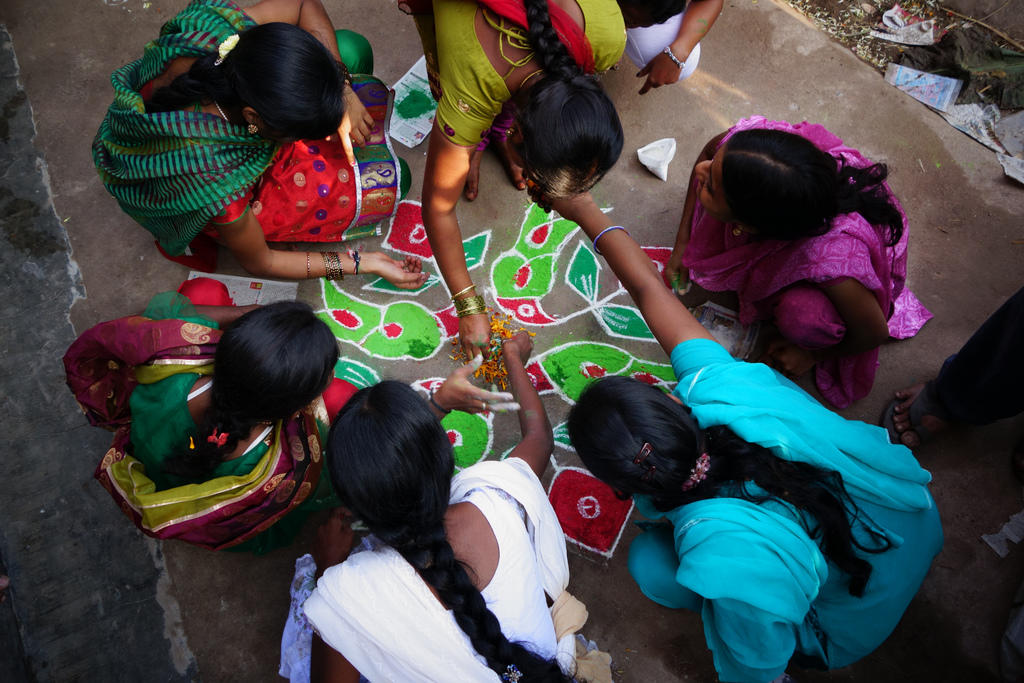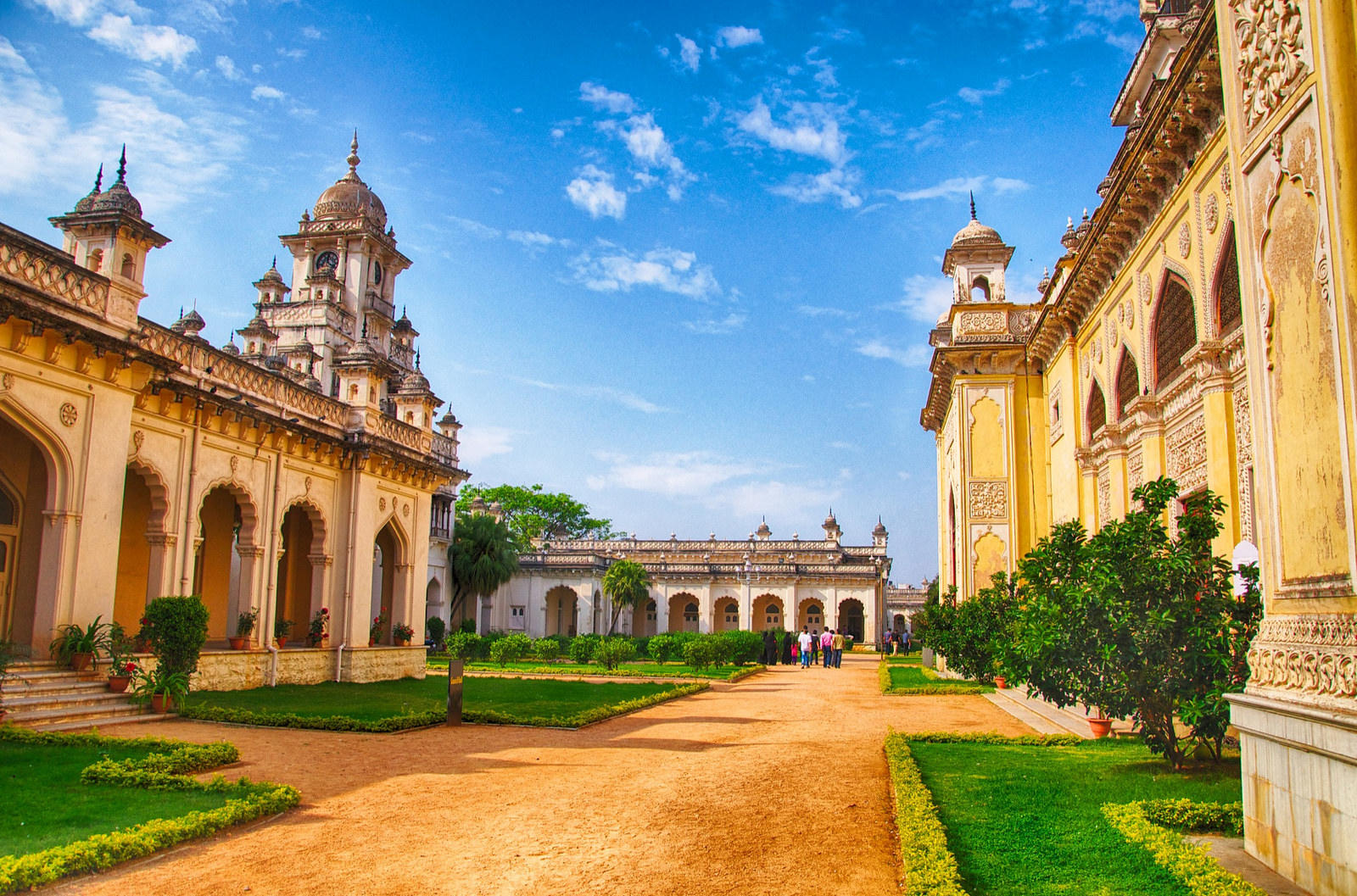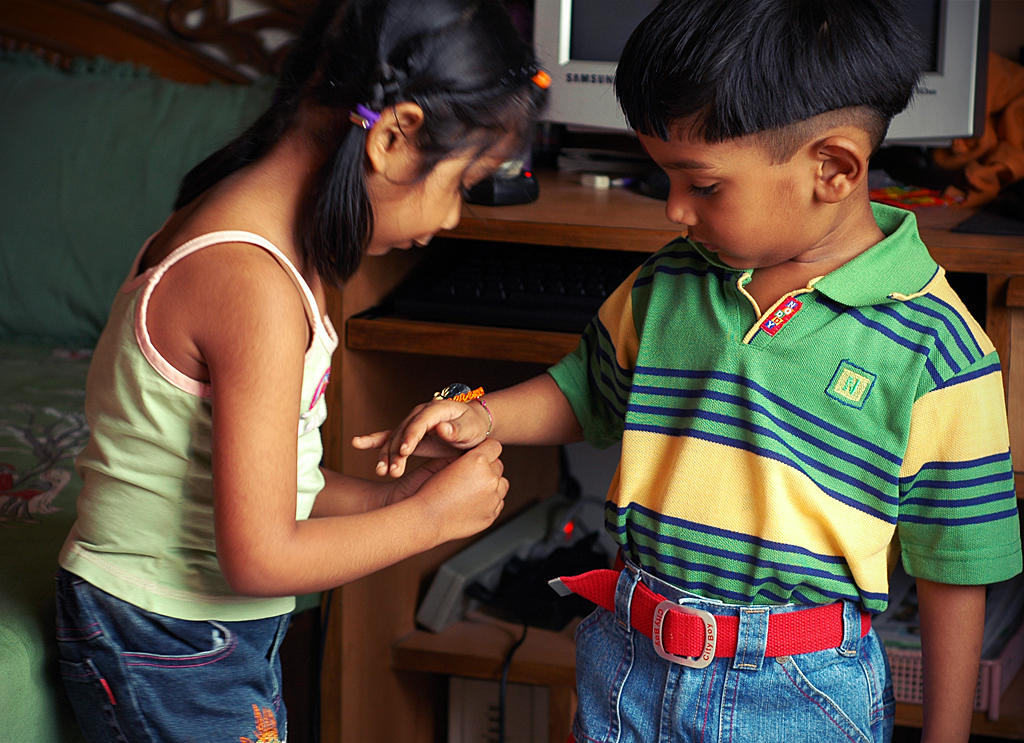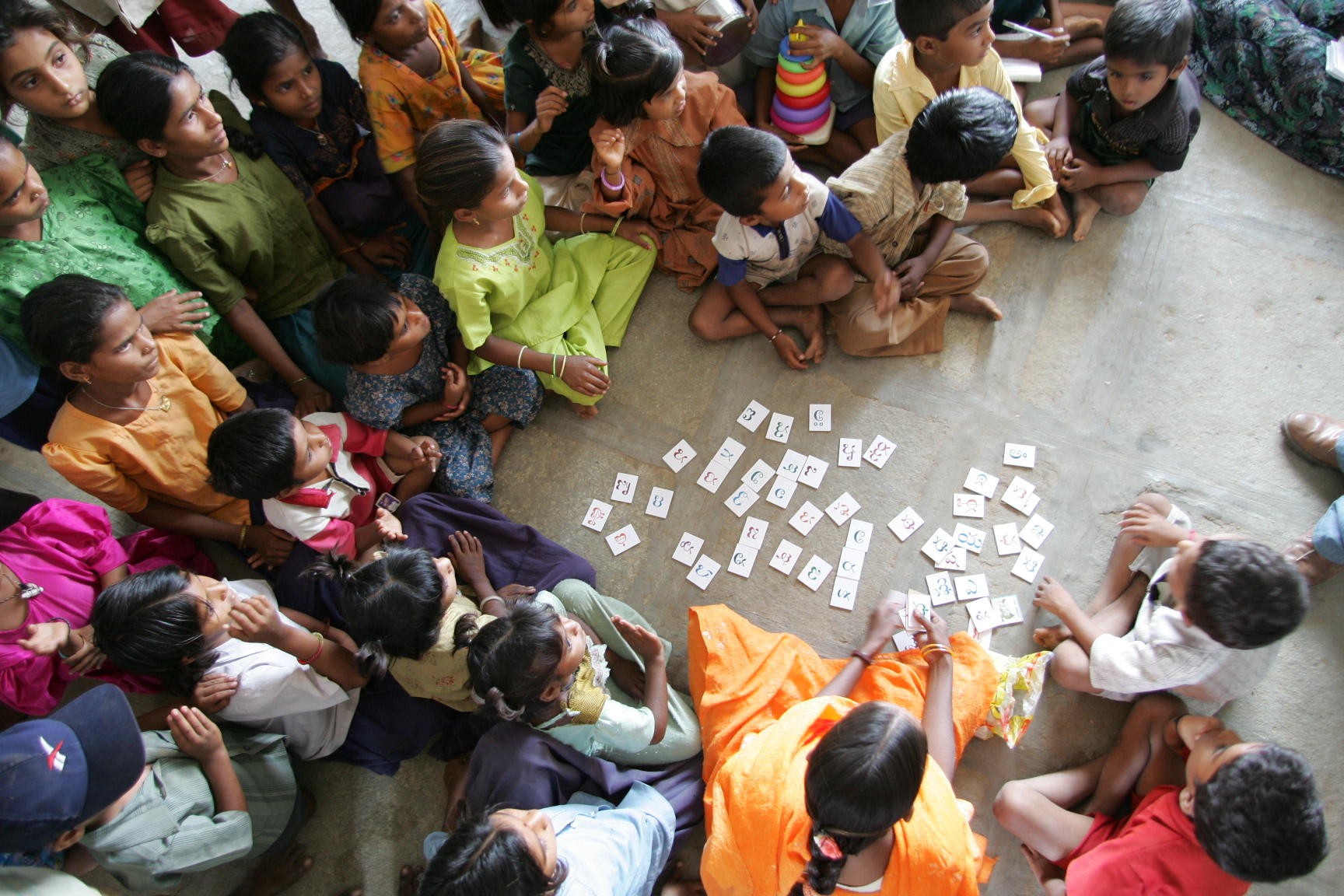Telugu is recognised by the Indian Constitution as one of the 23 Scheduled languages.
The Constitution was written and ratified in 1950, almost three years after the British Crown relinquished all its possessions in the Indian sub-continent and left the natives to self-govern. On January the 26th 1950, English and Hindi became the official languages of the Indian government.
However, each state and territory of the Union was given the liberty to choose its own official language or languages, amongst the ones recognised by the Eight Schedule of the Constitution.
This made sense, as there are more than 122 languages spoken by at least 10,000 people in India and 30 languages spoken by at least 1 million people. States could decide, according to their demographics, what language would serve the interests of their population for the best. Many Indian states and territories recognised more than one language as official simply because of the diversity of their population.
For example, in Mumbai, Marathi is the main language.

As recently as 2014, the Indian Constitution changed and created the 29th states of the Union of India. The partition of this state, called Telangana, from Andhra Pradesh, was partly due to the division of the population in the state over their native language. Telugu became the official language of Telangana.
Bob Harris, English music presenter former host of the BBC2 music programme The Old Grey Whistle Test, and co-founder of the magazine Time Out has said that:
India's linguistic diversity surprises many Westerners, but there are nearly thirty languages in India with at least a million native speakers. There are more native speakers of Tamil on our planet than of Italian. Likewise, more people speak Punjabi than German, Marathi than French, and Bengali than Russian. There are more Telugu speakers than Czech, Dutch, Danish, Finnish, Greek, Slovak, and Swedish speakers combined.

The Origins and History of Telugu
Contrary to Hindi, Teluguis a member of the Dravidian language family, for which linguists have struggled to identify a birthplace. Some think that the Dravidian languages may have been born in India while others believe that it was brought by migrations three to four thousands years ago.
Wherever it came from, the Dravidian languages, including Telugu, are mainly spoken in South and Southeast India.
The first apparitions of Telugu words were found to be written along the more common vernacular Sanskrit language. Nagabu was the earliest occurrence of a Telugu word to have been found, and archaeologists have estimated that the inscription it was written on date from the 1st century BCE.
For a long time it was used as a side language of Sanskrit, but reverse coin legends were often written in Telugu or Tamil, while the main face of the coin was minted inPrakrit (a group of medieval dialects formerly used throughout India).
In the North of India Urdu is more commonly spoken.

The first apparitions of Telugu being used as a written language on its own were found in the Rayalaseema region of Andhra Pradesh. It is believed that the local ruling dynasty, the Renati Cholas, decided to use Telugu for official purposes instead of the usual Sanskrit.
The rise and rule of the Karnata Empire in the south of India from the 14th to 17th allowed Telugu to flourish. Telugu was the preferred language of the court even though Kanada was also used throughout the Empire. Under the influence and patronage of King Krishnadevaraya, Telugu became a prominent and popular literary language.
Alas, the Karnata Empire succumbed to the repeated invasion of the Deccan Sultanates in the North, and the decline was complete when most of the former Imperial regions declared their independence and formed princely states.
The Telugu Dialects in India
Telugu is the fourth most spoken native language after Hindi and Bengali. It counts more than 70 million native speakers in India only.
It is the official language of the Indian states of Andhra Pradesh, Telangana, and the union territory of Puducherry but due to historical migrations, Telugu is also spoken in some other regions: Tamil Nadu, Karnataka, Maharashtra, Odisha, Chhattisgarh, parts of Jharkhand and the Kharagpur region of West Bengal. It is also commonly used in the Andaman and Nicobar Islands territory.
Linguists classify Telugu in 3 main dialects:
- Andhra Telugu is mainly spoken in the coastal region of the Andhra Pradesh state.
- Rayalaseema Telugu is spoken in the four districts which compose the eponymous region of the Andhra Pradesh state.
- Telangana Telugu, spoken in the state of Telangana.
The state of Telangana was created in 2014 after more than four decades of political unrests and parliamentary negotiation. It was then official separated from the state of Andhra Pradesh but Hyderabad will remain the joint capital until 2025. One of the main difference between the two states is their language, and the Telangana Telugu was much more influenced by Urdu that the Andhra Telugu.

Besides these three main dialects, many more are spoken through India including Berad, Dasari, Dommara, Golari, Kamathi, Komtao, Konda-Reddi, Salewari, Vadaga, Srikakula, Vishakhapatnam, East Godavari, Rayalseema, Nellore, Guntur, Vadari and Yanadi.
Some Adivasi, or indigenous tribes of the Indian sub-continent, also speak dialects closely related to Telugu: the Chenchu people, a hunter-gatherer tribe scattered through the states of Andhra Pradesh, Telangana, Karnataka and Odisha, speak Chenchukulam.
In Karnakatta, the 4 million native speakers are speaking a version of the language which has been more influenced by the Kanada language and is slightly different to the Andhra version.
In the state of Tamil Nadu where 3.5 million Telugu speakers live, linguists have identified no less than five different dialects: Hosur, Salem, Coimbatore, Vellore, Tiruvannamalai and Madras.
Take good Hindi classes London here.

The Telugu Alphabet
The Telugu script evolved from the Brahmic script approximately 1500 years ago. This script is formed by an alphasyllabary made of 18 vowels (short and long) and 35 consonants signs.
Each vowel has two forms; the first one is used when the vowel is at the beginning of the word if a word in only composed of vowels.
The second form is used when the vowel is added to a consonant to form a consonant/vowel syllable.
On top of the 53 vowel and consonant signs, Telugu also uses four more characters which will change the way a syllable is pronounced or where the tonic accent on a word will be placed.

In the East of the country, the Tamil idiom is widespread.
అం / అఁ / అః / క్
The numbers in Telugu
| The numbers in English | The numbers in Telugu | The numbers written in Telugu |
|---|---|---|
| 0 | ౦ | sunna |
| 1 | ౧ | okaṭi |
| 2 | ౨ | renḍu |
| 3 | ౩ | mūḍu |
| 4 | ౪ | nālugu |
| 5 | ౫ | aidu |
| 6 | ౬ | āru |
| 7 | ౭ | ēḍu |
| 8 | ౮ | enimidi |
| 9 | ౯ | tommidi |
Telugu Literature
Literature of this language spans ancient to contemporary periods, showcasing its diverse cultural traditions. Dating back to the 11th century, the initial literary works consisted of poetry as well as religious epics, with one of the principal works when the Mahabharata was first translated from Sanskrit to Telugu. The literary tradition continued to grow throughout the 16th century with the growth of the Vijayanagar Empire. Contemporary works of Telugu literature have evolved from the 19th century, with literary forms including novels, plays, songs and short stories.
The Telugu Language Outside India
Small communities speaking related languages live in Pakistan, Afghanistan, Nepal, Bangladesh, Bhutan, Malaysia, Indonesia and Singapore.
Telugu is also it is also the language of the Sri Lankan Gypsy people known as the Ahikuntakas.
Telugu speakers are found as well in Australia, New Zealand, Bahrain, Canada (Toronto), Fiji, Malaysia, Singapore, Mauritius, Myanmar, Italy, Netherlands, Belgium, France, Germany, Ireland and the United Kingdom, South Africa, Trinidad and Tobago, and the United Arab Emirates.
The most significant community living outside of India can be found in the United States which counts more than 800,000 speakers. Telugu is actually one of the fastest-growing languages in the US, with the number of speakers growing by 86% between 2011 to 2018. This is largely driven by the growth of the IT sector in the US and links between Hyderabad and the American engineering industries. In New Jersey and the capital of Jersey City, the high concentration of speakers birthed a little India neighbourhood that some refer to as Little Andhra.
In the UK, the last census only counted about 14,000 native speakers.
Check for Hindi lessons online here.
















It is helpful for everyone
Hi Roopasree! Thank you for your valuable feedback! Great to hear that you’ve found this article useful.